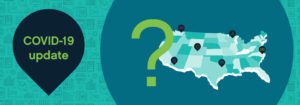Wouldn’t it be nice if all you needed to avoid denials was a crystal ball? You could gaze in, examine all the ways that claims could go wrong, and initiate immediate action to avoid issues. Think of the money you could save and the time your staff would get back! In the absence of magic, future-telling apparatuses, advancements in AI can help you answer the question, what can you do to prevent denials? Today on the blog, we’re talking about AI-enabled predictive analytics—your official crystal ball substitute.
Predictive analytics, a subset of advanced analytics, leverages historical data alongside statistical modeling, data mining techniques, and machine learning to forecast future outcomes and identify potential trends based on past patterns. If that sounds like gibberish, don’t worry. Predictive analytics is really just what it sounds: using data to anticipate what may happen in any given scenario.
Data science models have been used across many industries with great success—but healthcare has been slower on the uptake. Though not surprising, the hesitancy to adopt predictive analytics may be hurting providers, particularly when it comes to revenue cycle.
Cost to collect is one of the largest non-clinical expenses for most hospitals and health systems. A recent report estimated that providers spend $19.7 billion a year managing denied claims for care—a number that will continue to rise if we don’t collectively take steps to strengthen revenue cycle operations. Predictive analytics can help providers understand where leakage is most prevalent and stratify the “holes” in the process by impact and ‘avoidability.’
With comprehensive insight into their denials landscape surfaced at their fingertips, providers can save time and resources previously dedicated to parsing through seemingly endless claims to extract scraps of information. The ability to correct claims before submitting them to payers can alleviate many of the challenges involved with reworking claims and enable providers to receive cash more quickly, which drives down the cost to collect.
Of course, the use of predictive analytics won’t stop every denial. Some are unavoidable and others unactionable, but avoiding claims that are denied for common reasons will make a measurable impact on overall organizational health.
A few examples of what predictive analytics can help address include:
- Questions about eligibility and gaps in benefits
- Omitted patient identification and coverage information
- Missing or invalid authorizations
- & more!
Although it would be great to have advanced models tailored to all denials, payer rules and adjudication systems are constantly updated. If you decide to work with a partner like MedeAnalytics to gain predictive capabilities, be sure they have a clear, robust process in place for staying up to date on regulatory developments and can quickly apply necessary changes to their technological systems. We have an entire team of data scientists continually researching and deploying new models to help healthcare organizations reach their clinical and financial goals.
When providers are empowered to use predictive analytics for both systematic and institutional learning, it has an immediate and long-term positive impact on their ability to effectively manage denials and reduce cost to collect. No crystal ball necessary.
Get our take on industry trends
Avoid COVID-19 modeling pitfalls by eliminating bias, using good data
COVID-19 models are being used every day to predict the course and short- and long-term impacts of the pandemic. And we’ll be using these COVID-19 models for months to come.
Read on...Population Health Amid the Coronavirus Outbreak
In speaking with many colleagues throughout the provider and payer healthcare community, I’ve found an overwhelming sense of helplessness to the outbreak’s onslaught. This is exacerbated by the constant evolution of reported underlying medical conditions that indicate a higher risk of hospitalization or mortality for a coronavirus patient.
Read on...COVID-19 and the Financial Storm Ahead for Providers
Across the country, healthcare organizations are seeing 40%-80% declines in monthly charges with some of the most profitable services lines only seeing 20% of their normal monthly volumes during the pandemic.
Read on...3 Steps Any Healthcare Organization Can Take to Improve Enterprise Analytics
By Kristin Weir When it comes down to the most basic purpose of why organizations use analytics, it’s simple: they…
Read on...


